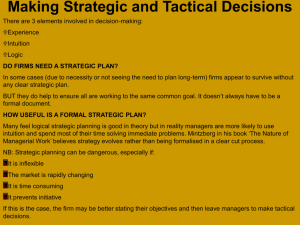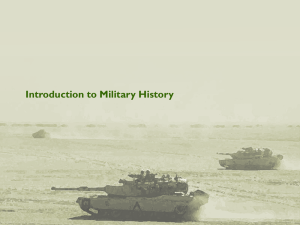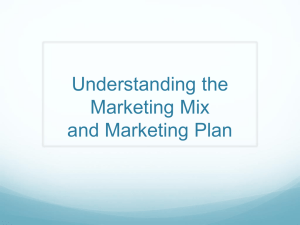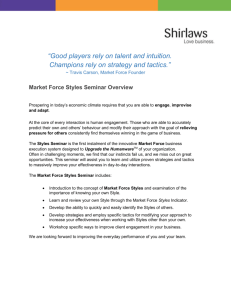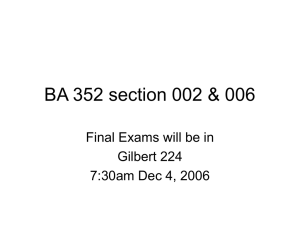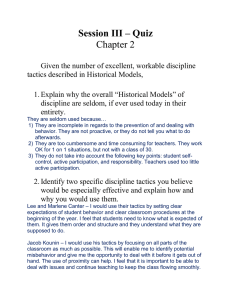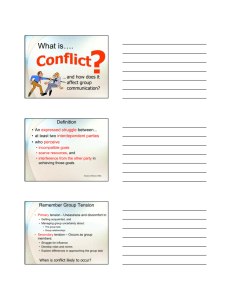Use the systems theory to analyze the case study. What system
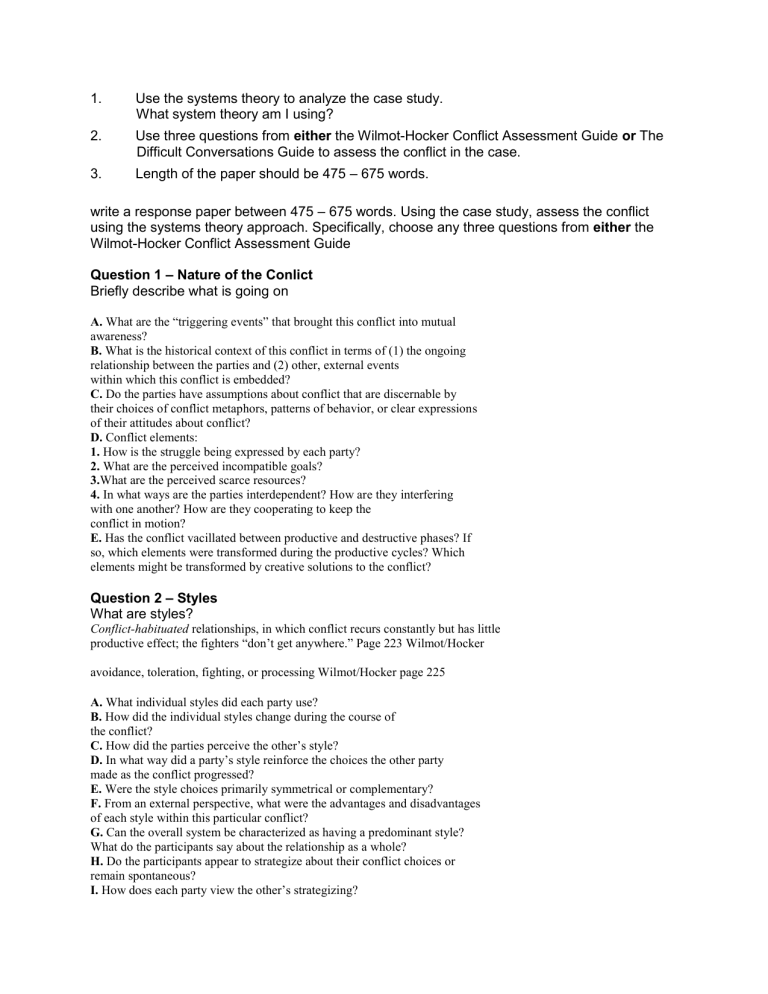
1. Use the systems theory to analyze the case study.
What system theory am I using?
2. Use three questions from either the Wilmot-Hocker Conflict Assessment Guide or The
Difficult Conversations Guide to assess the conflict in the case.
3. Length of the paper should be 475 – 675 words. write a response paper between 475 – 675 words. Using the case study, assess the conflict using the systems theory approach. Specifically, choose any three questions from either the
Wilmot-Hocker Conflict Assessment Guide
Question 1
– Nature of the Conlict
Briefly describe what is going on
A.
What are the “triggering events” that brought this conflict into mutual awareness?
B. What is the historical context of this conflict in terms of (1) the ongoing relationship between the parties and (2) other, external events within which this conflict is embedded?
C. Do the parties have assumptions about conflict that are discernable by their choices of conflict metaphors, patterns of behavior, or clear expressions of their attitudes about conflict?
D. Conflict elements:
1. How is the struggle being expressed by each party?
2. What are the perceived incompatible goals?
3.
What are the perceived scarce resources?
4. In what ways are the parties interdependent? How are they interfering with one another? How are they cooperating to keep the conflict in motion?
E. Has the conflict vacillated between productive and destructive phases? If so, which elements were transformed during the productive cycles? Which elements might be transformed by creative solutions to the conflict?
Question 2 – Styles
What are styles?
Conflict-habituated relationships, in which conflict recurs constantly but has little productive effect; the fighters “don’t get anywhere.” Page 223 Wilmot/Hocker avoidance, toleration, fighting, or processing Wilmot/Hocker page 225
A. What individual styles did each party use?
B. How did the individual styles change during the course of the conflict?
C. How did the parties perceive the other’s style?
D. In what way did a party’s style reinforce the choices the other party made as the conflict progressed?
E. Were the style choices primarily symmetrical or complementary?
F. From an external perspective, what were the advantages and disadvantages of each style within this particular conflict?
G. Can the overall system be characterized as having a predominant style?
What do the participants say about the relationship as a whole?
H. Do the participants appear to strategize about their conflict choices or remain spontaneous?
I. How does each party view the other’s strategizing?
J. What are the tactical options used by both parties?
K. Do the tactical options classify primarily into avoidance, competition, or collaboration?
L. How are the participants’ tactics mutually impacting on the others’ choices? How are the tactics interlocking to push the conflict through phases of escalation, maintenance, and reduction?
Question 3 – Negotiation
A. Are the parties able to negotiate with one another? Why or why not?
B. What is done to equalize power?
C. Do the parties use primarily competitive tactics, collaborative tactics, or some combination?
D. Were the parties able to reach agreements that are durable?
Conflict Assessment Guide
The Conflict Assessment Guide will help you map all of the central elements of your conflict.
I. Nature of the Conflict
A. What are the “triggering events” that brought this conflict into mutual awareness?
B. What is the historical context of this conflict in terms of (1) the ongoing relationship between the parties and (2) other, external events within which this conflict is embedded?
C. Do the parties have assumptions about conflict that are discernable by their choices of conflict metaphors, patterns of behavior, or clear expressions of their attitudes about conflict?
D. Conflict elements:
1. How is the struggle being expressed by each party?
2. What are the perceived incompatible goals?
3.
What are the perceived scarce resources?
4. In what ways are the parties interdependent? How are they interfering with one another? How are they cooperating to keep the conflict in motion?
E. Has the conflict vacillated between productive and destructive phases? If so, which elements were transformed during the productive cycles? Which elements might be transformed by creative solutions to the conflict?
II. Orientation to the Conflict
A. What attitudes toward conflict do participants seem to hold?
B. Do they perceive conflict as positive, negative, or neutral? How can you tell?
C. What metaphoric images do conflict participants use? What metaphors might you use to describe the conflict?
D. What is the cultural background of the participants? What is the cultural context in which the conflict takes place?
E. How might gender roles, limitations, and expectations be operating in this conflict?
|III. Interests and Goals
A. How do the parties clarify their goals? Do they phrase them in individualistic or systemic terms?
B. What does each party think the other’s goals are? Are they similar or dissimilar to the perceptions of self-goals?
C. How have the goals been altered from the beginning of the conflict to the present? In what ways are the prospective, transactive, and retrospective goals similar or dissimilar?
D. What are the topic, relational, identity, and process goals?
E. How do the TRIP goals overlap with one another?
F. Which goals seem to be primary at different stages of the dispute?
G. Are the conflict parties “specializing” in one type or the other?
H. Are the identity and relational issues the “drivers” of this dispute?
I. Are any of the goals emerging in different forms?
J. How do the goals shift during the prospective, transactive, and retrospective phases?
IV. Power
A. What attitudes about their own and the other’s power does each party have? Do they talk openly about power, or is it not discussed?
B. What do the parties see as their own and the other’s dependencies on one another? As an external observer, can you classify some dependencies that they do not list?
C. What power currencies do the parties see themselves and the other possessing?
D. From an external perspective, what power currencies of which the participants are not aware seem to be operating?
E. In what ways do the parties disagree on the balance of power between them? Do they underestimate their own or the other’s influence?
F. What impact does each party’s assessment of power have on subsequent choices in the conflict?
G. What evidence of destructive “power balancing” occurs?
H. In what ways do observers of the conflict agree and disagree with the parties’ assessments of their power?
I. What are some unused sources of power that are present?
V. Styles
A. What individual styles did each party use?
B. How did the individual styles change during the course of the conflict?
C. How did the parties perceive the other’s style?
D. In what way did a party’s style reinforce the choices the other party made as the conflict progressed?
E. Were the style choices primarily symmetrical or complementary?
F. From an external perspective, what were the advantages and disadvantages of each style within this particular conflict?
G. Can the overall system be characterized as having a predominant style?
What do the participants say about the relationship as a whole?
H. Do the participants appear to strategize about their conflict choices or remain spontaneous?
I. How does each party view the other’s strategizing?
J. What are the tactical options used by both parties?
K. Do the tactical options classify primarily into avoidance, competition, or collaboration?
L. How are the participants’ tactics mutually impacting on the others’ choices? How are the tactics interlocking to push the conflict through phases of escalation, maintenance, and reduction?
VI. Conflict and emotions
A. In your situation, what approaches to change have you utilized or are you contemplating? How effective are these approaches?
B. Choose several emotions that you and the other party have expressed in this conflict. What are the functions of these emotions? How are they mitigated or moderated?
C. What are you learning about emotions in this particular conflict?
D. Discuss how you might use positive emotions to help you (and the other party) in this particular conflict.
E. In this conflict, have you strayed out of the “zone of effectiveness?”
How? What have you or might you do about this?
VII. Mapping Interactions and overall patterns
A. What rules of repetitive patterns characterize this conflict?
B. What triangles and micro events best characterize the conflict?
C. How destructive is the tone of this conflict?
D. Are there coalitions that affect this conflict?
VIII. Attempted Solutions
A. What options have been explored for managing the conflict?
B. Have attempted solutions become part of the problem?
C. Have third parties been brought into the conflict? If so, what roles did they play and what was the impact of their involvement?
D. Is this conflict a repetitive one, with attempted solutions providing temporary change but with the overall pattern remaining unchanged? If so, what is that overall pattern?
E. Can you identify categories of solutions that have not been tried?
IX. Negotiation
A. Are the parties able to negotiate with one another? Why or why not?
B. What is done to equalize power?
C. Do the parties use primarily competitive tactics, collaborative tactics, or some combination?
D. Were the parties able to reach agreements that are durable?
X. Forgiveness & Reconciliation
A. In your situation, are you working toward forgiveness or reconciliation?
Clearly state which in terms of the chapter’s information on the difference between the two.
B. In your situation, what power imbalances should be addressed? How are you doing that?
C. For you, is forgiveness a decision or a process? Use information in the chapter to discuss your position.
D. In what way is your situation calling for intrapersonal or interpersonal forgiveness, or both?
E. Discuss the problems of apology in your situation.
F. What lessons from other cultures might inform your study of your own conflict?
